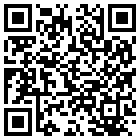August 15, 2013
From:http://www.bbc.co.uk/news/uk-england-manchester-23713913
Aninteractive artwork which links the looms of the Industrial Revolution and thefirst computers has gone on show.
The Reader, created by art collectiveMidConversation, uses silk squares to "echo" the movement of Jacquardlooms and chimes to represent binary code.
The looms were controlled by binary punchcards and the code was later used for the world's first programmable computer,built in Manchesterin 1948.
The work can be seen at the city's Museum of Science and Industry (MOSI).
It has been unveiled alongside a replica ofthat first computer, the Small Scale Experimental Machine, which became knownas Baby.
It is widely regarded as being the firstrecognisable modern computer, due to its ability to store data and use RandomAccess Memory.
'Playfulway'
Jacquard looms, developed by Joseph MarieJacquard in 1801, used punch cards to instruct machinery, creating patterns incloth without a need for human intervention.
This invention allowed mechanised weavingand paved the way for programmable computers.
The Reader was created by artists LauraJane Blake, Elizabeth Atherton and Lucy Crowder, who said it drew on"details of the Jacquard loom to bring it to life in a playful way".
They added: "The colourful laser-cutsilk squares echo the movement of the loom, while another section produces aseries of chimes arranged in a grid that represents binary code.
"When visitors operate the machinethey effectively hear the sound of binary code."
The sculpture will be on show at MOSI untilFebruary 2014.
 Pay attention to us
×
Pay attention to us
×